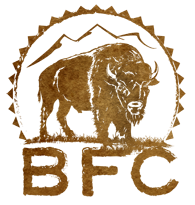Hello Everyone,
I hope this newsletter finds you well. I’m freshly back from Buffalo Field Campaign Headquarters. I had a great visit with staff and our board member Whitni Nelson. As you may know, we are very focused on the Montana Legislature and trying to halt the horrible bills that have been introduced. Montana Governor Gianforte and state lawmakers appear bent on writing extinction for wild buffalo into the code. The tough political climate in Montana has become even more difficult to defend the environment and wildlife. We are witnessing special interests further derailing public trust wildlife restoration in the state. Even though things have been difficult, we press on with dignity and skill. Our capable staff has gathered the voices of our members, with tens of thousands of people supporting our efforts to stop the government from slaughtering buffalo. Our collective voices matter. We will continue to educate our members and the public on the atrocities of Yellowstone bison mismanagement.
Recently, eight Native American Montana legislators sent a letter to the Biden Administration seeking leadership for bison restoration on federal lands in the state. Bison recovery is being blocked by the cattle industry. I understand their frustration. We cannot even get bison restored to the Yellowstone Ecosystem adjacent to Yellowstone National Park on National Forest lands. If we cannot succeed here, folks will have a more difficult time trying to succeed anywhere else.
With the topic of tribes and bison, this is an opportune time to recap my outreach to tribes and the discussions that have transpired. There are tribal representatives I spoke to who support efforts to begin bison restoration in the large Yellowstone landscape. They understand we can focus our energies where there is low hanging fruit and potential ease of collaboration. Those tribal delegates understand natural migratory movement and population growth are important components for honorable and respectful management of sacred, wild bison. Other tribes I communicated with want a huge increase in quarantine. Further, they want to keep the Yellowstone bison population artificially low so they can receive every bison available for restoration efforts elsewhere. In other words, those tribes want humans to keep manipulating the only continuously-wild herd of bison, suppressing their numbers to benefit their own tribal restoration efforts. What began as a tribal call to the end the annual government slaughter of Yellowstone bison decades ago, has unwittingly turned into a powerful tool helping to justify wild bison suppression. I staunchly disagree with that notion when managers have yet to begin any bison restoration in the Yellowstone Ecosystem. Why would state, tribal, or federal managers seek to move wild bison away from historic bison habitat that has not been recovered in that same ecosystem? I don’t get the reasoning. In fact, everything I’ve read and heard so far dictates that tribal bison restoration is predicated on a viable Yellowstone bison population. Wild, migratory bison are the foundation by which any tribal restoration must rely. It only makes sense to build up the source population by filling the ecosystem with a scientifically supported process. Therefore, it should be an easy decision for those tribes to support a fully-functioning wild population, fulfilling the ecological niche, as the wellspring for their goals. I have told the tribes as much more than once. The exception to tribes advocating for bison suppression and removal are the tribal leaders advocating for their treaty-reserved hunting rights. I’ve heard those tribes comment, time and time again, they want the Yellowstone Ecosystem filled before other restoration efforts take place. Those tribal leaders assert a robust, wild bison herd, naturally fulfilling the ecosystem, protects their treaties as the supreme law of the land. Those tribal delegates chastise state and federal governments for forcing them into the deplorable Interagency Bison Management Plan scheme. Chief among the disagreements of treaty tribes, are that treaty hunts happen well after traditional hunting timeframes and in horrible canned hunt conditions. Their treaty rights have been minimized to solely benefit the cattle industry as a tool to cull wild bison. Every year I hear treaty tribes call for more bison on the landscape, and disagree with the conditions created as a part of the Montana’s and Yellowstone National Park’s winter operations. Those are very important words. We at the Campaign witness the impacts of late winter hunting on the ground. We are in the field monitoring the management priorities forced by Montana and federal agencies. We have circulated pictures of unborn calves laying on the ground after late winter hunts. I am aware of state hunting regulations, and I have researched what is done to tribal members who violate their regulations. Every tribe taking part in treaty hunts, has a Law & Order Code with tough punishments in place to prosecute tribal members who violate the law. Tribal sovereignty governs this important facet of their lifeways as would be expected. Unfortunately, those hunters are being persecuted and demonized because state and federal managers refuse to restore public trust bison on federal lands in the state. Montana and the federal government create every deplorable condition on the ground that the masses despise so much. Things must change.
While I may not accept the priorities and actions of every tribe regarding bison management, I honor their sovereignty and capacity to set their own destinies. With that said, I will continue to firmly communicate Campaign solutions regarding existing bison mismanagement to their elected leadership. More must be done for wild bison restoration in the Yellowstone Ecosystem. When wild bison exist throughout the ecosystem, common sense solutions for more appropriate hunts and bison restoration on federal lands will be plain to see. If those eight Native American legislators want practical actions that have a chance at being implemented, they are found in the wild spirit of migratory bison fulfilling the Yellowstone landscape. Buffalo Field Campaign has provided leadership in this regard since our late co-founder Rosalie Little Thunder charted our path in 1997. Our mission to honorably restore bison to the Yellowstone Ecosystem is more important than ever. Our solutions benefit all Americans, including tribes.
Thank you for bearing with me as I unpacked this important facet of the complex issue that is Yellowstone bison management. I appreciate your support as we continue on this path. The Campaign continues to grow and change in response to the needs of the bison and our organization. Through it all, we stay true to our vision and mission. I am grateful that you continue to exercise your powerful voices. We are the only organization in the field monitoring the atrocities of the state of Montana and the U.S. government, and you choose to stand with us. Qeciyewyew (thank you) my friends. Have a wonderful rest of your day.
For the Buffalo,
James Holt Sr.
Executive Director, Buffalo Field Campaign









